Saudi Arabia-Central Asia Multilateral Trade, Status, and 2023/24 Prospects
New agreements and geopolitics introduce revived silk roads between the Middle East and Central Asia
By Farzad Ramezani Bonesh
Introduction
After the collapse of the Soviet Union in the early 1990s, the recognition of the independence of Central Asian countries (Kazakhstan, Turkmenistan, Uzbekistan, Kyrgyzstan, and Tajikistan), the establishment of diplomatic relations, and the opening of embassies between these countries and Saudi Arabia began almost immediately. Relations between Saudi Arabia and the countries of the region gradually gained economic dimensions, with the common Islamic religion as a mutual base.
This began with the establishing of various educational and religious institutions, the financing of religious education, and setting up various charities. However in recent years, numerous mutual trips and high-level consultations have increased economic relations as well.
Regional and Commercial Integration
The evolving global geopolitical landscape and the emergence of regional rivalries have accelerated Riyadh’s move toward Central Asia and the strengthening of relations. Riyadh seeks to create a diversified economy and take steps towards the Saudi Arabia Vision 2030 plan.
In addition to Riyadh’s entry as a “dialogue partner” in the Shanghai Cooperation Organization, Riyadh’s broader relations with the region can contribute to a greater presence in Central Asia, the Shanghai Organization, and the Eurasian Economic Union.
In May 2014, the first Saudi-Central Asian meeting was held, hosted by Saudi Arabia. In addition to the signing of the memorandums, investment opportunities in several fields, recognition of the private sector, and activation of economic cooperation, the Riyadh statement1 emphasized the importance of expanding the scope of trade exchanges and economic cooperation between countries.
At the multilateral level, the first joint meeting of the ministers of the GCC and Central Asian countries, the CA+GCC summit, took place in Jeddah last month (July 2023), and was titled “Strengthening cooperation and coordination and the joint action plan for the period 2023 to 2027”. Including numerous dialogues and economic
cooperation and mutual investment plans the CA+GCC is a fundamental step forward in bilateral and multilateral trade.
In these summits, attention has been paid to opportunities and strong potential in various dimensions of trade, logistics and transportation, energy, infrastructure, agriculture, transportation, health care, tourism, digitization, and innovation.
Broader topics such as transportation, energy, water, the development of green energy, and the development of trade and investment mechanisms for both sides have been considered in the development of relations.
Central Asian countries put their economic diplomacy priorities such as the development of cooperation to attract Saudi investment and expansion of exchanges in basic sectors. On the other hand, Riyadh has focused on establishing closer economic relations with Central Asian countries in order to compete with its own competitors – such as India, China and Russia -and diversify its economic partners. That said, given the relatively good relations, joint projects into the region together with these countries can also be anticipated.
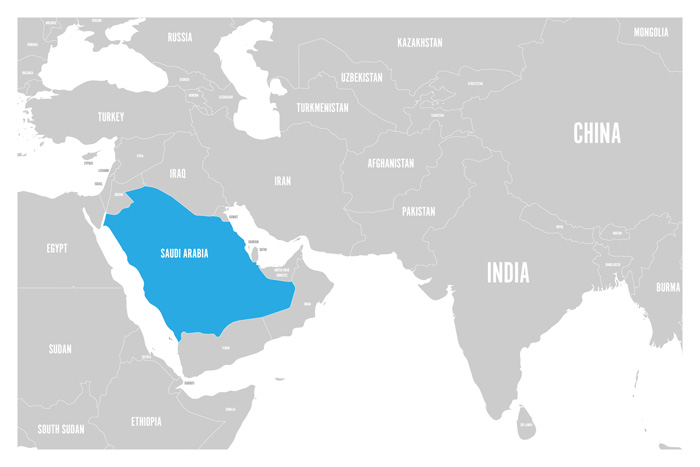
Meanwhile, geopolitical changes, including Saudi Arabia’s 88% dependence on imported grain, the end of the Ukraine Black Sea grain agreement with Russia, and the challenges of exporting agricultural products from Ukraine and Russia have increased Riyadh’s attention to Central Asia as a grain producer and diversifying its food partners. Riyadh now wishes Central Asia to play an important role in the Saudi food security strategy. The region’s
market of 75 million people and Central Asia’s abundant natural resources of energy and minerals are important variables in Riyadh’s attention to the region.
Kazakhstan
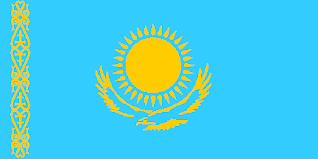
Relations between Saudi Arabia and Kazakhstan have developed over the past few decades based on 14 bilateral documents, an agreement on the avoidance of double taxation, and the prevention of tax evasion of Riyadh’s aid to construct the capital and social facilities in Kazakhstan. The Islamic Development Bank has also helped Kazakhstan with financing jointventures valued at more than US$1.3 billion.
Over the past few years, the exchange of various economic delegations has contributed to the bilateral economic partnership, joint committee, close cooperation between the two countries in the field of oil production and export (OPEC Plus), and investment in the field of mining and oil and gas.
Also, the signing of 13 agreements to strengthen investment and bilateral economic cooperation in a range of sectors such as electricity, tourism, sports, agricultural products, pharmaceuticals, media, financial and inter-Stock services, five investment and meat export contracts, and understanding between Kazakhstan and Saudi ACWA Power (with an initial investment of US$1.5 billion) have led to the growth of bilateral trade and investment.
Kazakhstan’s Strategy 2050 and the Saudi Vision 2030 are frameworks fordeveloping trade and investment relations. Also, paying attention to the opportunities and emphasizing the promotion of cooperation in the sector of industry, mining, agriculture and environment, telecommunications, information technology, tourism, Islamic banking, “Saudi Arabia and Kazakhstan Investment Forum”, strengthening relations between the private sectors, oil and gas and Electricity, renewable energy, hydrogen, the implementation of power plant construction, digital, innovation, cyber security, and artificial intelligence are an important basis for developing closer trade. As an important uranium producer, Kazakhstan is an opportunity to supply Saudi Arabia’s future nuclear energy needs. Kazakhstan also has space technology, and Riyadh pays attention to the use of Kazakhstan’s space infrastructure and power.
Kazakhstan is one of the ten largest producers of wheat and flour and can play an important role in providing the future food security of Saudi Arabia.
In 2021, Saudi Arabia exported US$2.26 million of products to Kazakhstan. The main products sent are Ethylene Polymers, Packaged Medicaments, and Tropical Fruits. In 2021, Kazakhstan exported US$40.3 million to Saudi Arabia. The main products that Kazakhstan exported to Saudi Arabia were refined copper, ferroalloys, and electric batteries. That relatively small bilateral trade base can be expected to achieve rapid growth.
Uzbekistan
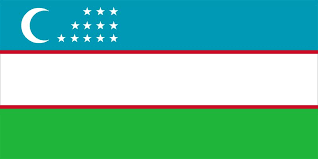
In recent years, economic relations have developed, and Saudi Arabia’s investments in various sectors of Uzbekistan’s economy have increased significantly between 2017 and 2021. By creating a visa-free regime for the citizens of Saudi Arabia and inviting the private sector, Tashkent wants Saudi Arabia to play an important role in Uzbekistan.
Previously, Riyadh supported Uzbekistan with several development loans to finance the implementation of 11 projects, while the performance of the Saudi Arabia Development Fund’s investment of US$50 million in several projects and investments in Uzbekistan’s health sector is continuing to reap rewards.
The recent expansion of meetings between the leaders of the two countries, the signing of 15 cooperation documents, and the promise of the Saudis in projects worth US$14 billion in Uzbekistan indicate the growth of bilateral cooperation and trade.
Riyadh’s attention to the production of natural gas in Uzbekistan, the commitment to increase the migration of Uzbek workers for work, the Saudi ACWA Power energy contract worth US$2.5 billion with Uzbekistan, and agreements to build a 100 MW wind farm worth US$108 million are all examples of increasing bilateral trade and investment cooperation.
Saudi Arabia’s investment in Uzbekistan has exceeded US$1.5 billion by the end of 2021.
With about 40 companies with Saudi Arabian capital registered in Uzbekistan, the opening of direct flights, paying attention to untapped potentials, the possibility of implementing new projects in the chemical, metallurgy, mining, and textile industries, ensuring food security are all assisting with the development of bilateral relations.
In 2021, Uzbekistan exported US$8.03 million to Saudi Arabia. The main products that Uzbekistan exported to Saudi Arabia are raw zinc, hand-woven rugs, and grapes . In 2021, Saudi Arabia exported US$8.38 million to Uzbekistan. The main products that Saudi Arabia exported to Uzbekistan were amino-resins, tropical fruits, and aluminium cans.
Turkmenistan

Turkmenistan has large reserves of natural gas and is the main source of income from energy exports. Nine Saudi-Turkmen agreements, avoidance of double taxation, air services agreement, a financing agreement worth US$40 million, the TAPI pipeline project loan and cooperation between Aramco and Turkmen Gas are part of the expanding process of economic and trade relations between the two sides.
Over the past two years, the development of meetings between officials and leaders and the intensification of political dialogues, emphasis on the implementation of previous agreements, the formation of a business council, the improvement of the public-private cooperation environment, cooperation in the oil and gas and chemical sectors, textile and carpet production, and the implementation of the “road map” Commercial and economic talks have led to the expansion of the scope of cooperation.
In 2021, Turkmenistan exported just US$53,000 of products to Saudi Arabia, including linens, men’s clothing and tractors. In 2021, Saudi Arabia exported US$2.28 million to Turkmenistan. The main products that Saudi Arabia exported to Turkmenistan were machinery, engines, and liquid pumps. However, the emergence of the INSTC supply chain corridor, which links Saudi Arabia to Central Asia via the Persian Gulf, transit via Iran and the Caspian Sea can be expected to give Turkmenistan a significant boost in Saudi export transits with plenty of opportunities in the haulage, warehousing, relabelling, and logistics services areas as well. The recent re-establishment of Saudi-Iranian relations means that trade with Turkmenistan can be expected to reach fast track volumes, and especially so as concerns Saudi – Central Asian overall trade volumes.
Kyrgyzstan
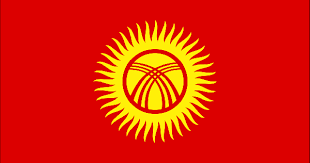
Kyrgyzstan is economically the poorest country in the region bar Afghanistan, being without oil and gas reserves but with reserves of gold, mercury, and uranium. Since 2011, Riyadh has granted Kyrgyzstan ten soft development loans to finance development projects and programs worth up to US$330 million.
In recent years and the expansion of official visits, the 60-day visa-free regime for Saudi Arabian citizens, the launch of a charter flight on the Bishkek-Jeddah-Bishkek route, the financing contract for the construction of 3000 residential units (soft development loan of US$100 million and the financing of the Taraz-Talas road project at US$30 million have all helped to develop relations.
There are also untapped potentials and investment opportunities, increasing the volume of mutual trade and expanding Islamic tourism and logistics services.
Bishkek’s desire to diversify its investors and partners, projects such as expanding regular flights, trading meat, organic vegetables, and fruits, developing joint tourism routes, strengthening cooperation between banks, developing green energy for the possibility of participating in the construction of a Hydroelectric power plant will also help develop business.
In 2021, Kyrgyzstan exported US$1.03 million of products to Saudi Arabia. These included processed fruits and nuts, honey, and refined petroleum. In 2019, Saudi Arabia exported about US$107,000 worth of produce to Kyrgyzstan. The main products that Saudi Arabia exported to Kyrgyzstan included tropical fruits, and electric heaters.
Tajikistan
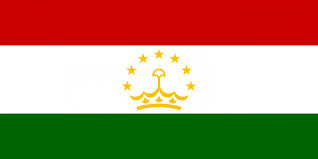
Over the past decade, the Saudis have financed many infrastructure projects, including highway reconstruction and the construction of schools and hospitals, as well as water energy projects, cross-border transportation, and mineral extraction in Tajikistan. Since 2016, a significant increase in Saudi investment in Tajikistan has taken place, with the
Islamic Development Bank of Saudi Arabia committed about US$108 million to aid infrastructure projects, and the Saudi Arabian Development Fund investing US$200 million in a wide range of construction projects.
Tajikistan has welcomed the participation of the Saudi side in the implementation of hydropower projects, including the construction of power plants and the construction of power transmission lines. Apart from agreements to avoid double taxation and prevent tax evasion, regular mutual trips and paying attention to the potentials in the fields of energy, water, mining, and tourism are of mutual interest.
In 2021, Tajikistan exported US$95,600 of products to Saudi Arabia, including women’s clothing, tensile testing machines, and eyewear frames. In 2021, Saudi Arabia exported US$415,000 of goods to Tajikistan. These included amino-resins, insulated wire, and broadcasting equipment.
Vision
Despite the economic and domestic challenges in Central Asia, these five countries see Saudi Arabia as a powerful economic player. Regarding trade, the exchange value between Saudi Arabia and Central Asian countries remains relatively small, however even small capital inflows can help Central Asian countries.
Saudi Arabia’s actions in Central Asia represent a futuristic strategy. Although the recent GCC-Central Asia summit did not conclude any big ticket deals, the continuation of the meetings and the placing of ties on a higher institutional level is promising. Regional and global geoeconomic and geopolitical changes and the emergence of more common interests can lead to the development of trade routes, such as the INSTC, and bilateral and
multilateral trade cooperation between Riyadh and the Central Asian region.
Related Reading
- Gulf and Central Asian Countries Hold First CA+GCC Heads Of State Summit
- Iran, Saudi Looking To Develop US$2 billion In Bilateral Trade
About Us
Middle East Briefing is one of five regional publications under the Asia Briefing brand. It is supported by Dezan Shira & Associates, a pan-Asia, multi-disciplinary professional services firm that assists foreign investors throughout Asia, including through offices in Dubai (UAE), China, India, Vietnam, Singapore, Indonesia, Italy, Germany, and USA. We also have partner firms in Malaysia, Bangladesh, the Philippines, Thailand, and Australia.
For support with establishing a business in the Middle East, or for assistance in analyzing and entering markets elsewhere in Asia, please contact us at dubai@dezshira.com or visit us at www.dezshira.com. To subscribe for content products from the Middle East Briefing, please click here.
- Previous Article Turikye’s Ecommerce Sector Grew 100% In 2022
- Next Article Obtaining 0% Tax Liability In UAE Processing and Distribution





